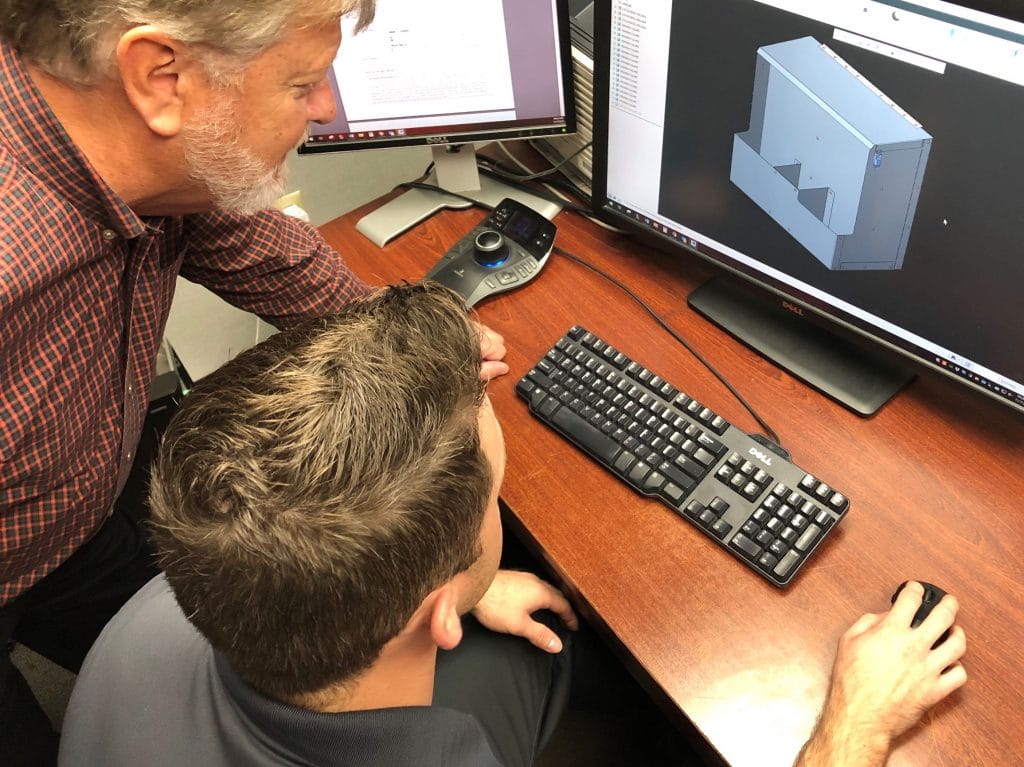Even as US manufacturing continues to be the global leader for goods produced ($2.3 trillion in 2018), high operating costs threaten that leadership position. To be competitive, it is imperative that manufacturers reduce costs and increase efficiency in their operations.
Many companies implement processes such as Six Sigma, lean manufacturing, 5s, and/or Kaizen to increase efficiency and improve quality within manufacturing process. However, focusing solely on the processes can leave you with unexpected costs if your parts and components are not designed for your manufacturing and assembly processes. By the time your product gets to production, it may be too late.
Costs of Poorly Designed Products and Components
There is a “Rule of 10” that states the cost to replace or fix a defect increases by 10x at each step of assembly. The chart below shows how quickly costs can escalate.
| Level of Completion | Cost |
| Component | x |
| Subassembly | 10x |
| Final assembly | 100x |
| Testing | 1,000x |
| End User/Field | 10,000X |
In one survey, 16% of manufacturers reported scrap and rework rates of 4% of sales or higher. Essentially, a $50 million manufacturer is throwing away $2 million to rework or scrap product.
Mitigating Unexpected Costs with DFMA
Design for manufacturing and assembly (DFMA) can add value to your company by increasing speed to market, improving production efficiency, and lowering the cost per part.
DFMA works to find solutions for potential manufacturing and assembly impediments that could disrupt your manufacturing processes, timelines, and budget. It works to align engineering and production during the design phase, going beyond fit and function.
Elements that may be evaluated will depend on the component and its intended use, but a holistic view that incorporates the component, the complete part, the manufacturing and assembly processes, and the intended use and environment of the part should be considered. Some examples include:
Selecting material
Evaluation of materials should include costs; the component’s intended environment; the weight, durability and strength of the material; and how they will react with other materials within the manufacturing process, product, or environment. Material evaluation not only refers to the metal being used but also any surface finishes that may be required, as well as secondary materials that make up the product.
Standardizing components across products
Customized components or hardware can be costly. When possible, using a component from a current product can be beneficial and provide a cost savings. In addition, you will already know what to expect from that component.
Reducing number of components
If a component or product has multiple parts, it should be evaluated to see if it can be designed in such a way as to reduce the number of parts without significantly causing a negative impact on the quality, function, aesthetic, or cost of it. For example, the unique forming process of Salvagnini panel benders enables engineers to design more complex bending into a part than can be achieved in conventional press brakes, which provides opportunities for several components to be combined into a single component.
Reducing or eliminating secondary operations
Engineers should look to see if secondary operations can be reduced or eliminated to save time and money. This can be done through design of the product or by using other manufacturing techniques. For example, laser welding is not only faster than tradition MIG and TIG welding, but also eliminates the need for secondary finishing operations. For certain applications, this can be a big cost saver.
Understanding manufacturing equipment
Having an understanding of the capabilities and limitations of the manufacturing equipment can head off production challenges and contain costs. For example, engineers can reduce costs by designing around the tolerances that standard machinery can hold. Extremely tight tolerances on a part may limit the equipment that the part can run on and force production to use higher cost methods to manufacture it and perform the necessary quality checks. Similarly, cost can be reduced by designing around standard tooling. Unusual bend radii or unusual features on a part may require additional tooling, which drives cost up.
Partner with Estes
If you’re looking for a partner with proven experience in value engineering and DFMA for sheet metal fabricating, Estes has the experience to deliver. Its engineers draw on their manufacturing expertise to translate ideas from concept to manufacturing while applying DFMA principles throughout the development process.
Contact us today to learn more.








